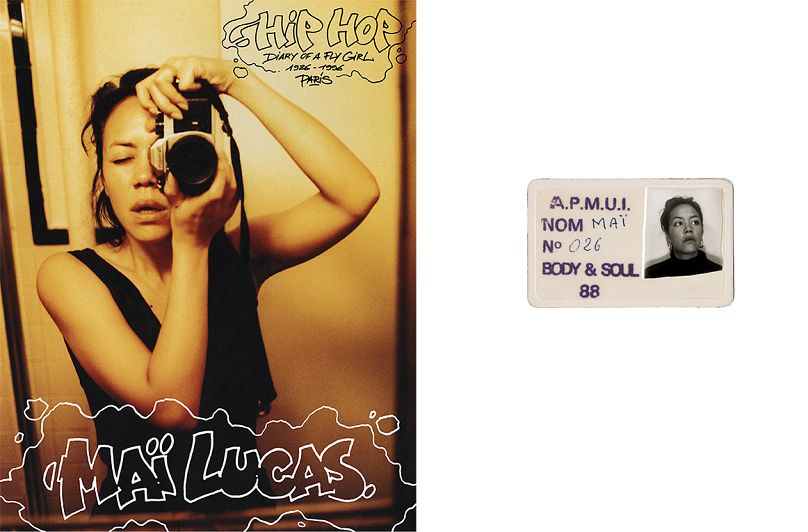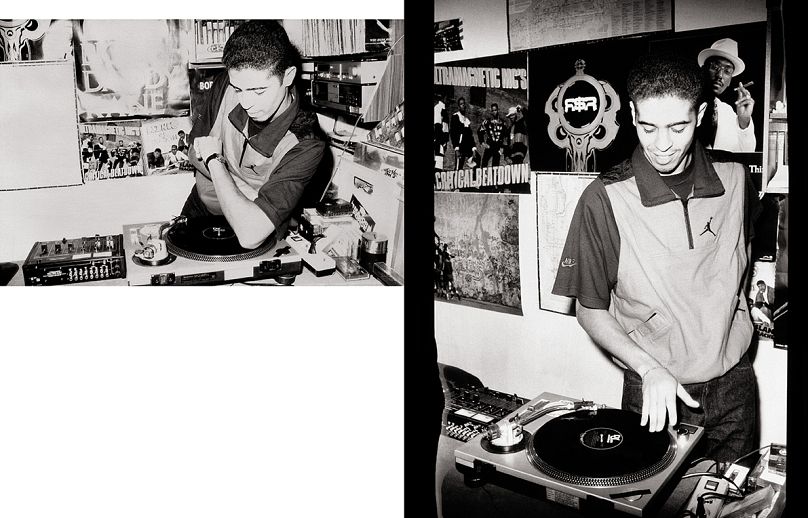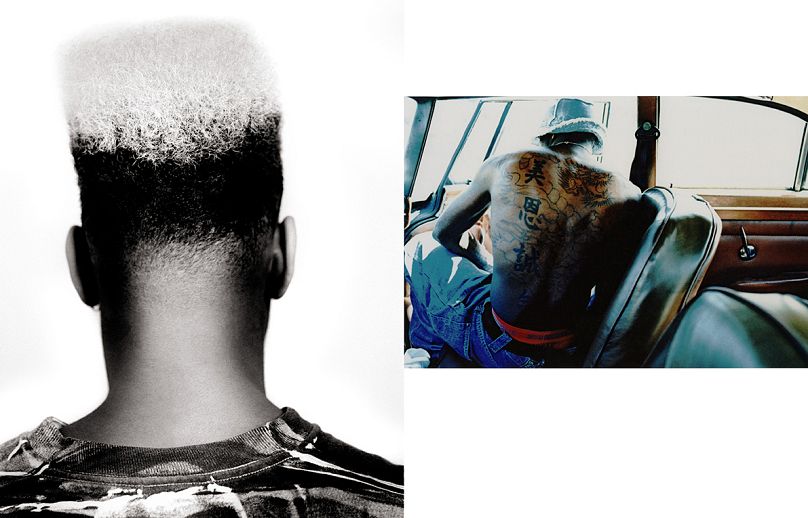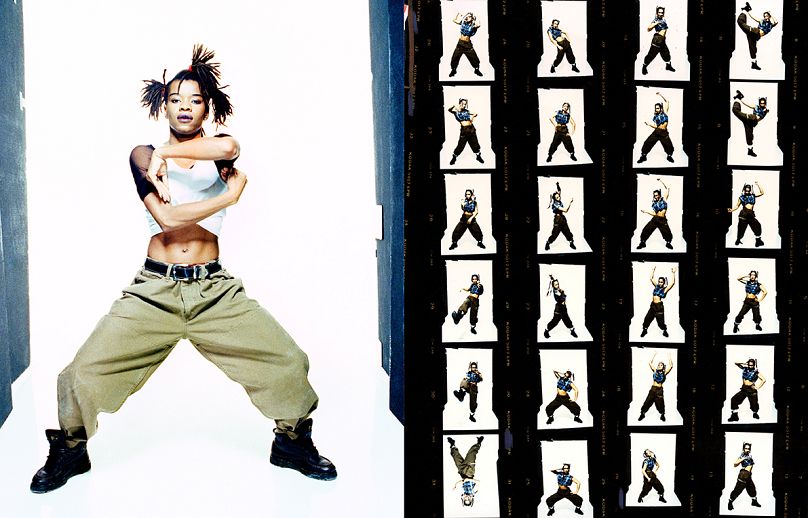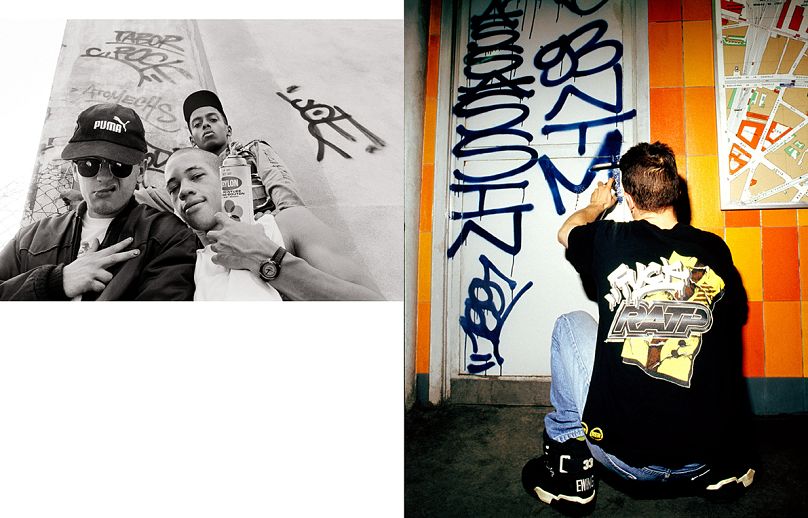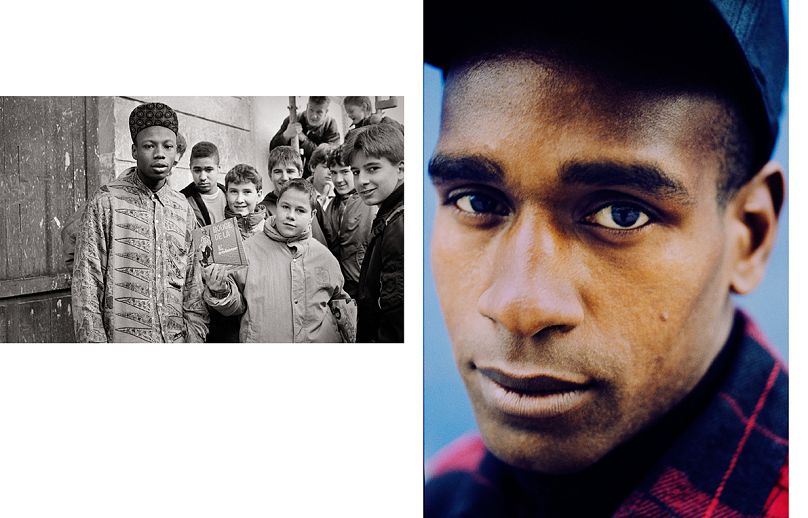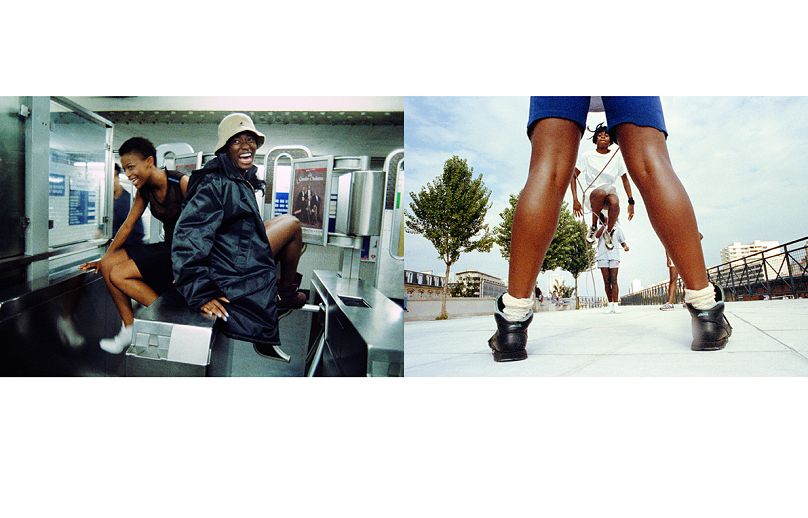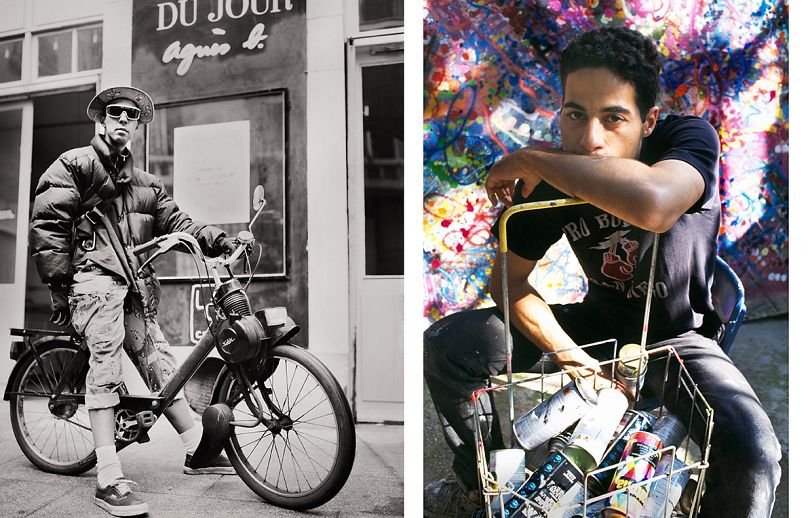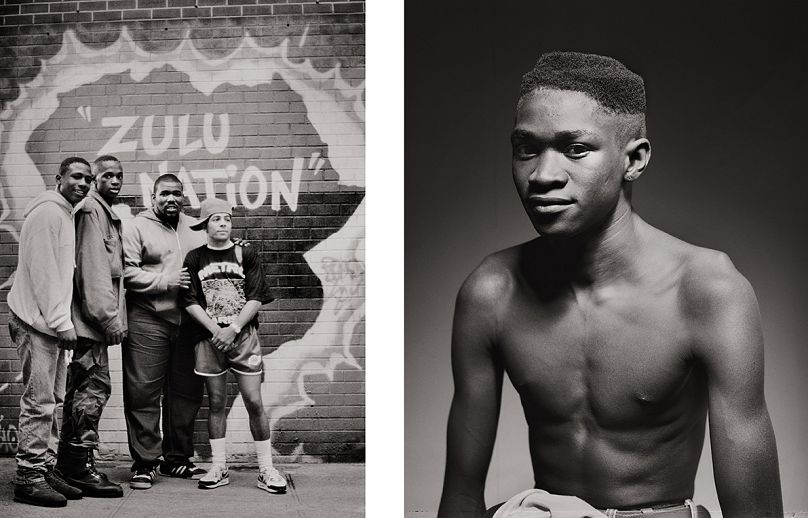"Hip-hop allowed us to find each other and create together." Mai Lucas' photographs show how hip-hop became the voice of France's multicultural youth.
In the early 1980s, as Paris was beginning to spread its wings to become one of Europe’s great centres of modern culture, a teenage Maï Lucas was discovering hip-hop.
A child of the free-wheeling May ‘68 crowd, Lucas was raised in Paris’ Les Halles neighbourhood, a working class urban hub with a still-seedy underbelly. Sex, drugs and rock and roll were in no short supply - and the city was a sparkling playground for kids like her, who were left mostly to their own devices.
“I’d hang around in the streets, where I met people who took me to nightclubs,” the photographer told Euronews Culture. “That’s how hip-hop began for me.”
“At the time, it was all about New Wave, Punk, stuff like that,” Lucas said. “And all of a sudden I’m in a nightclub and I hear Herbie Hancock. And I was like, Wow I like this. What is this music? I’ve never heard anything like it. It was surprising. It was new.”
The new style of music came from the United States and at first, it was nearly inextricable from Paris’ fashion and underground entertainment scenes, brought over by those lucky enough to have travelled across the Atlantic.
Trendy nightclubs are where the seeds of hip-hop were first planted in the City of Light, according to Lucas. But she says the reason hip-hop stuck was that it spoke to the city’s increasingly multicultural youth.
“For us in Paris, we heard this music and we thought, this comes from the US, it’s modern and it represents us. It’s multicultural like we are,” she said. “But the more powerful message was that we saw all these street kids dancing in the street. You could feel that this was a youth movement created by youth, with a certain freedom.”
A movement for Paris' multicultural youth
A budding fashion photographer, Lucas began to document the beginnings of hip-hop in Paris. Her photos show a joyous and vibrant youth movement filled with creative young people – dancers, artists, musicians, DJs, models.
Most of those involved were part of France's new generation: they were children of immigrants, they were mixed-race, they were Muslims, they were people who felt French but didn’t always feel accepted in France. Hip-hop is where they found that acceptance.
“Our parents brought this diversity to France,” Lucas said. “My Vietnamese mother wasn’t born in France. My friend’s African parents weren’t born in France. But we were born in France. We’re all French, but all of a sudden we found ourselves a bit stuck in this European society. Hip-hop allowed us to find each other and create together.”
“It was this creative world where you didn’t need to be some great professional. You just had to participate. Some people might shine brighter than others, but everyone was welcome.”
At first, she says, they were a group of around 50 people who “walked around town like we were Gods because we knew about these special things that came from the US.”
But through word-of-mouth, their numbers quickly multiplied and the movement grew beyond music, influencing dance, fashion, art and even language.
By participating in this movement herself as a fly girl, Lucas had a front-row seat to the birth of this new culture. And she used her photography to act as a messenger, presenting Paris' hip-hop culture to the outside world in photos that appeared in magazines and on the covers of albums.
“When I started photographing these multicultural young people, I presented them in a way that made them the heroes of my world, the heroes of our story,” she said. “Back then, when photographers portrayed people in housing projects, they were always made out as villains, drug addicts, poor people. I portrayed them as my heroes.”
Heroes of French hip-hop
Today, France is the second-largest market for rap and hip-hop after the United States. Some of the people Lucas photographed went on to become larger-than-life stars for their role in building up the culture.
One of her most emblematic photos shows a young MC Solaar, fresh off the back of his first single being released. At the time, he had no idea that 'Bouge de là' would become a massive hit, or that he would be catapulted to superstardom in the coming years, becoming one of the biggest names in French rap.
“When I took this photo of MC Solaar his song had just played on the radio, and all these kids heard him rap and thought he was great,” she said. “They loved his flow, his positive energy, his storytelling. They recognised him on the street. So I decided to make them part of the photo.”
“What I love is that he’s still wearing the same shirt that he had on for the album cover. He had no idea he was going to be famous.”
Girls were also welcome in hip-hop, something Lucas says she feels has changed today. One of her most striking photos shows two “fly girls” hopping the turnstile in the Paris metro, dressed to the nines with giant smiles on their faces.
“We had a stylist on this shoot, because we wanted to represent our French hip-hop,” Lucas said. “We weren’t American, we dressed different. We used hip-hop differently.”
“The girls of the movement were sort of like tomboys, they had character. You had to show up serving looks, with your short dress, your sneakers, your Kangol. This photo shows the joyful side of the movement. These girls’ parents are African, but they’re French, from here, and all of a sudden they feel good in France thanks to this movement that belongs to them.”
In 2021, Lucas released a photo book called “Hip Hop Diary of a Fly Girl,” featuring a variety of different shots she took between 1986 and 1996 in Paris. She said she wants the book to tell the story of the birth of a movement, which came to define a new generation of multicultural French people while opening Paris up to the world.
“It’s a book to tell the world about how France participated in hip-hop culture, thanks to a lot of French people with immigrant backgrounds, but also bourgeois (white) French people,” she said. “We all believed in it together. It was young, it was fresh. These are also artistic photos, not documentary. There was a vision behind it, a universe we were creating. And from there, we created this hip-hop culture.”
Lucas says she believes hip hop has changed enormously in the 50 years since its start in the United States – she thinks it’s become less inclusive and more masculine. Her photos are a reminder of the beginnings of the movement in France, the messages that she doesn’t want to be forgotten.
“Hip-hop in France has changed,” she says. “Today, it’s tied to the experience in housing projects, there’s talk of guns, machismo, things that don’t relate to our era at all. So I thought it was important to talk about our era, because hip-hop doesn’t belong only to the Paris suburbs, it’s evolved. What remains powerful about it is the message. It’s a platform to show creativity that exists outside social norms.”
Maï Lucas' work can be viewed at WallWorks Gallery in New York City until 18 August, as part of the exhibition "Hip Hop 101". By appointment only.












